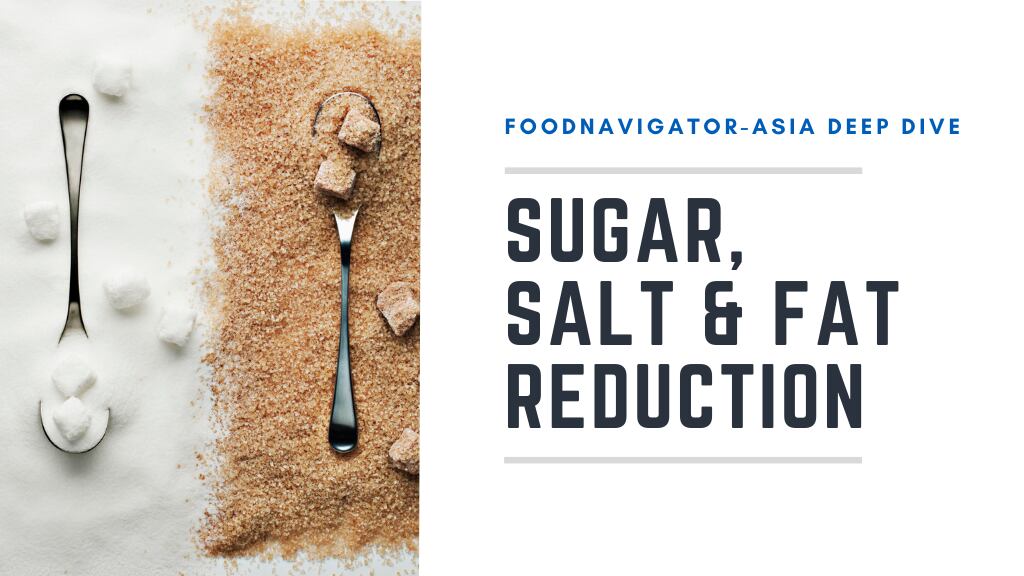Not so sweet situation: More than half of packaged beverages sold in Singapore contain high levels of sugar
Sixty per cent of packaged non-alcoholic beverages (NABs) sold on the Singapore market contain high amounts of sugar and would be assigned under Grade C or D in the soon-to-be-implemented Nutri-Grade system.
The Singapore Government will be implementing front-of-pack nutrition labels, the Nutri-Grade system, for NABs sold in Singapore by the end of 2021. It assigns Grade A to D for free sugar and saturated fat.
With the implementation of Nutri-Grade, retailers in Singapore are looking towards stocking healthier choices and there is pressure on manufacturers to reformulate beverage formulations.
The average sugar content across all NABs was 6.9 g per 100 mL/g (average range of 3.0 to 22.5 g) and would be predominantly assigned to a Grade C. 46% of beverages would have been categorised as Grade C and 14% as Grade D if they do not reformulate their products when the Nutri-Grade system kicks in.
Colour me bad: Researchers in Australia develop colourimetric sensors for packaging to reduce food waste
Researchers from the University of New South Wales in Sydney are developing colourimetric sensors attached to food packaging to let consumers know when to eat products before they go off.
It is based on the colourimetric polymer sensor technology, which changes colour when it reacts with compounds produced during food spoilage. Typically, the sensor is blue, which indicates the food or drink is fresh. When it turns purple, it means the food should be consumed soon, and when it turns red, it means the food has already gone bad.
Associate Professor Rona Chandrawati from the School of Chemical Engineering at UNSW Sydney, said the team has been working on this technology for five years, and hopes to eventually commercialise it.
“We envision having these colourimetric sensors attached to food packaging in our fridges so we can contribute to reducing food waste and also help eliminate the confusion on the date marking tools that we currently have.”
Algorithm approach: Researchers in Australia use AI to predict fibre content in packaged foods
Researchers from the University of New South Wales in Sydney have developed a machine learning methodology to predict dietary fibre content in commonly available packaged foods.
Currently, the labelling of fibre content of packaged products is voluntary in Australia, unless a fibre content claim is made. This makes it difficult for consumers to make informed food purchase decisions for policy makers to monitor trends in the fibre content of packaged foods.
So, researchers used machine learning to develop an algorithm that can predict fibre content based on commonly available nutrient information and applied this to packaged products that do not report fibre content.
Machine learning techniques have been used in areas including malnutrition screening and food item recognition, but “this is the first study to use machine learning to predict the fibre content of packaged products,” researchers wrote in Nutrients.
Kimchi deceit: South Korea goes digital to prevent origin adulteration amid leap in ingredient imports
South Korea is going digital in its efforts to crackdown on imported kimchi and related products masquerading as being locally produced, after identifying a large leap in the imports of ingredients traditionally used to in the sector.
The kimchi market in South Korea is in a unique position where domestically-made products are much more highly-prized than imported ones, largely due to the vast majority of imported kimchi entering the country from China and this product perceived by local consumers to be of low quality.
Locally manufactured kimchi made with local ingredients is thought of as the most ‘premium’. But in recent months, local authorities identified a large increase in the imports of ingredients used to make kimchi, leading to concerns of deceit with regard to product origins and the decision to conduct a nationwide crackdown.
“The National Agricultural Products Quality Management Service will be enforcing a crackdown on country-of-origin labelling for kimchi and kimchi vegetables [in] November and December, with a focus on items high in demand during kimchi production season such as cabbage, red pepper powder, garlic, ginger, carrots and so on,” the agency’s Chairman Lee Ju-myeong said.
Fab four: How emerging NZ research can help take high value nutrition products to global markets
New Zealand’s High-Value Nutrition National Science Challenge (HVN NSC) has published updates on how its digestive, immune, infant and metabolic health research programmes are progressing, all of which are designed to foster exports of local products to global markets.
The HVN NSC is on 10-year mission to develop high-value foods with validated health benefits in hopes to increase export revenues from the food and beverage sector by 2025.
Funded by the New Zealand Ministry of Business, Innovation and Employment, the organisation recently published its annual report, providing an update on the progress of the four key programmes from June 2020 to July 2021.





